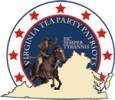
That being said, in order to get to this good news I had to wade through a very strange take on job creation. The editor quoted William Baker, President of the Chesapeake Bay Foundation (CBF), to say “…it is essential that the public understand that environmental regulations will create jobs to reduce pollution.” Baker went on to estimate (no factual number was given) 240,000 jobs were created. The editor then went on to say “The environmental-protection industry is now worth $312 billion a year nationally and employs almost 1.7 million people.” The editor boasted that approximately 75% of job growth in this field is driven by GOVERNMENT REGULATION (my capitalization). I felt this deserved some thoughtful investigation, so I offer the facts and thoughts that follow. Please keep in mind, as stated previously in this newspaper, I want what every other reasonable citizen wants: clean air, clean water and a job-friendly environment.
The CBF Chief Executive is using the new talking point of the left: Government is Creating Jobs. The effort is to discredit the truth known by any honest economist: Jobs are created by the Free Enterprise System that became dominant in the Western World following the demise of feudalism.The truth is government jobs are mandated, not created.
In the Free Enterprise system, an entrepreneur takes his own initiative and utilizes his own money, saved or borrowed, to create his or her business. When the business is successful and the company grows, the entrepreneur hires people and creates wealth for him or herself and others. Tax dollars are not part of the income of the company; they are part of the expenditure, or burden, of the company. When government “creates” jobs, taxpayer funds derived from the tax burden of these same entrepreneurs is used to both create the job and fund its sustained existence through direct funding, tax breaks and grants. So who really brings about the ability to create the job: is it the bureaucrat working for the taxpayer-funded government agency who hires the contractors and regulators as required by government rules and regulations or is it the entrepreneur who creates the wealth from which the bureaucrat skims dollars to make its payrolls?
Moreover, this whole theory of “government creating jobs” is very similar to Bastiat’s 1850 parable of the broken window. The unforeseen consequence of funneling large sums of taxpayer funds into government employment roles does not create wealth for the society in general; it serves only those directly employed by this same government. This is because the funding source is not self-generating and self-sufficient. It is dependent upon the success of the free enterprise system it is milking for its very existence. This demonstrates how opportunity costs, as well as the law of unintended consequences, affect economic activity in ways that are “unseen” or ignored.
The enormous growth of the Federal Government over the last 100 years is resulting in a diminution of our freedoms and a huge expansion of costly government regulations. The U.S. government justifies these regulations as symbols of progress in the fight to rein in the natural excesses of free market capitalism. However, an enormous federal government that controls approximately a quarter of national income has equally excessive tendencies. This state of affairs begs the question: If it is the responsibility of government to maintain oversight and check excesses of corporations, who will regulate the government?
Regulatory agencies have little incentive to police themselves, and the truth of this claim is evidenced by their growing body of work. In 2010, regulation proliferation set a new record with 3,573 final rules in the 2010 Federal Register, and proposed rules were up by 20 percent. In 2010 the Obama administration published 82,480 pages of regulations.
According to studies by The American Action Forum and the Heartland Institute, federal regulations in 2011 added more than $231 billion in regulatory costs to private businesses and state and local governments. Lost work hours associated with abiding by new regulations totaled an astounding 133 million hours of paperwork.
A good example of this, as it relates to environmental regulation, is the EPA. Started in 1970 with an initial workforce of 4,084 employees, the EPA has quadrupled its direct staff to 17,359. The total taxpayer-funded budget for the EPA for this year, 2012, will be $9 billion. The EPA has spent over $250 million just since 2005 on the clean-up of the Chesapeake Bay with another $67.4 million projected for this year.
The EPA will also force local jurisdictions to pony up. The Washington Examiner recently reported that Prince Georges County, Maryland, only one of the many jurisdictions affected by mandatory EPA Bay regulations, will be forced to spend more than $800 million over the next decade for their share of EPA Bay regulatory compliance. The estimated cost for Virginia to comply with EPA regulations for the next two years is $82 million while another $159 million is to be spent this year for previous commitments.
Virginia 6th District US Representative Bob Goodlatte is pushing back. He states “These overzealous regulations will affect everyone who lives, works, and farms in the Chesapeake Bay Watershed, and the cost of complying with these requirements will be devastating during our current economic downturn, result in many billions of dollars in economic losses to states, cities and towns, farms and other businesses large and small.”
Is he right? I can only relate my personal experience. A year ago I attended a meeting conducted by the Rappahanock-Rapidan Regional Commission to seek solutions for our “dirty” streams which fall into our part of the Chesapeake Bay Clean Water Act. I discovered factual analysis pinpointing the source of the purported stream problems did not exist. There were even unresolved questions about the validity of the tests for determining the existence and magnitude of actual unclean water. To solve the perceived problem we were being given a shotgun approach solution. For me, it threw into doubt the efficacy of this entire program.
And what if the Bay restoration regulations follow the logic and job creation tactics of the Forest Service? Montana’s Finley Basin has known tungsten deposits. A company wanted to bring revenue and jobs to the state by developing the resource. While the property was successfully drilled and recognized by Union Carbide in the seventies, it is now about 200 yards inside a roadless study area. The Forest Service was willing to offer a conditional drilling permit. Among the conditions were these requirements: 1) The drill sites must be cleared using hand tools, 2) the drilling equipment and fuel must be transported to the site by a team of pack mules, 3) the mules must be fed certified weed-free hay, and 4) drill site and trail reclamation must be done using hand tools. Needless to say, these jobs were never created for man or beast.
As Frederic Bastiat explained over a century ago, sometimes the best intentions have unintended consequences.
Rick Buchanan
Event Chairman, VTPP Federation






